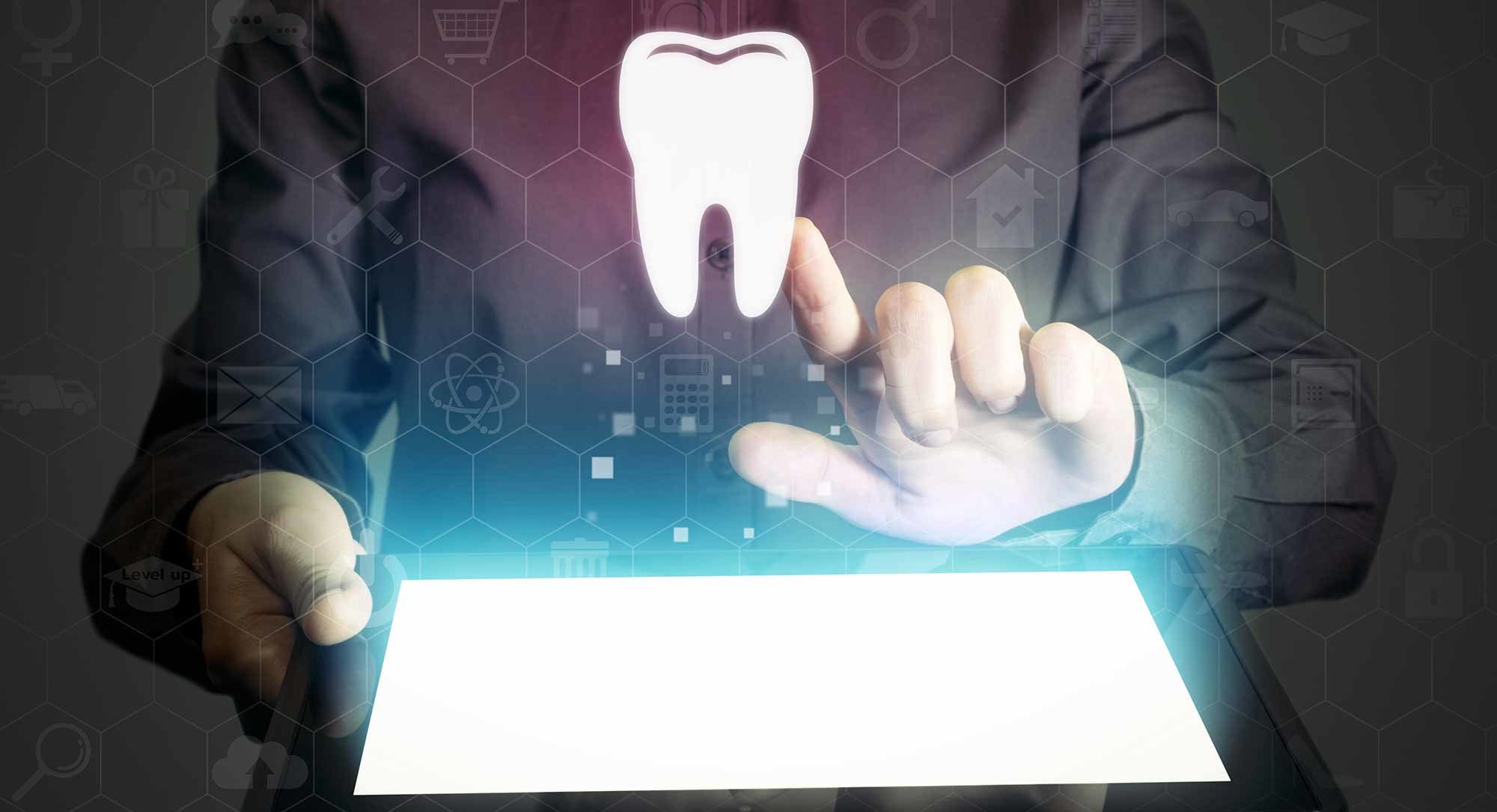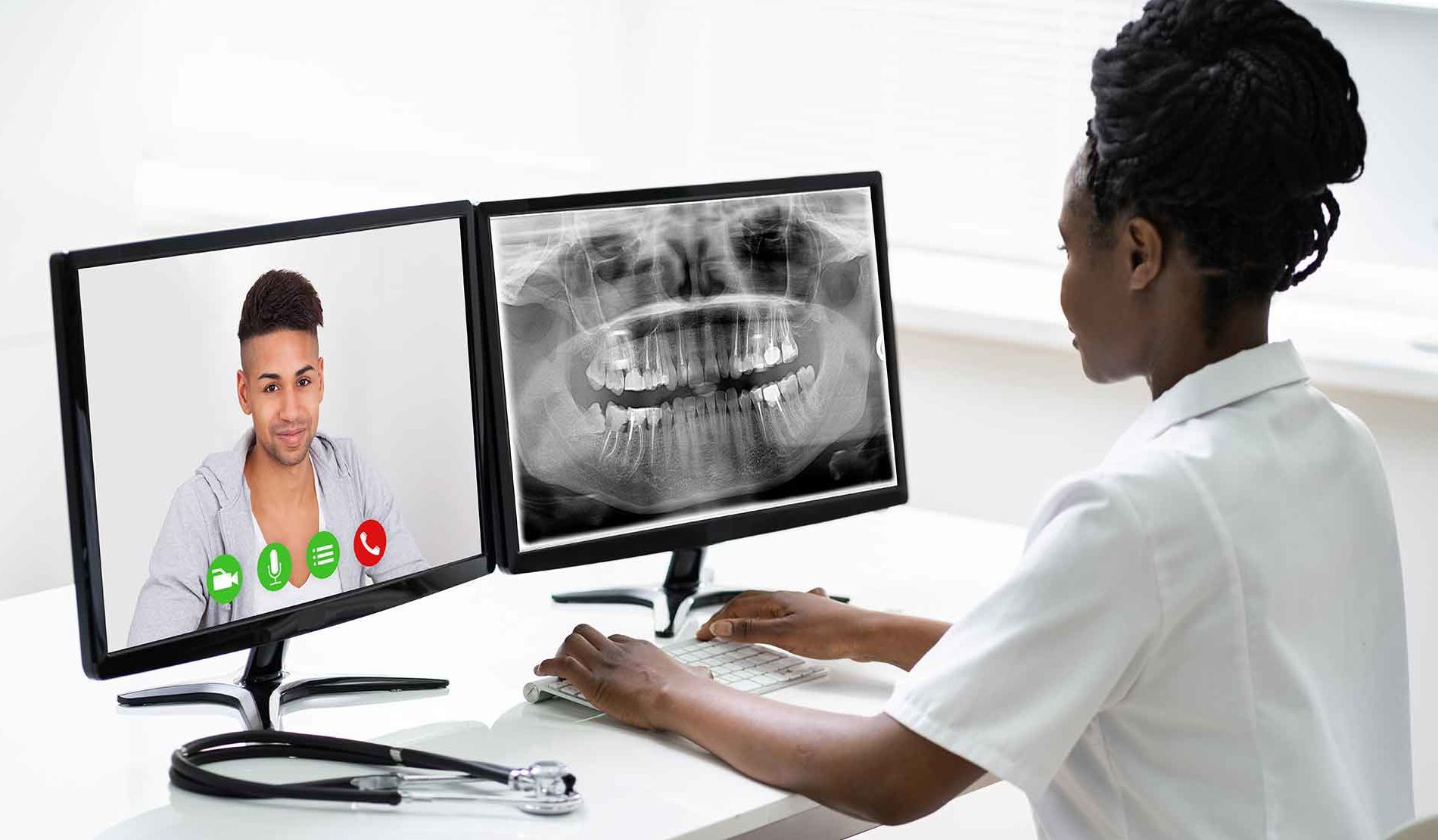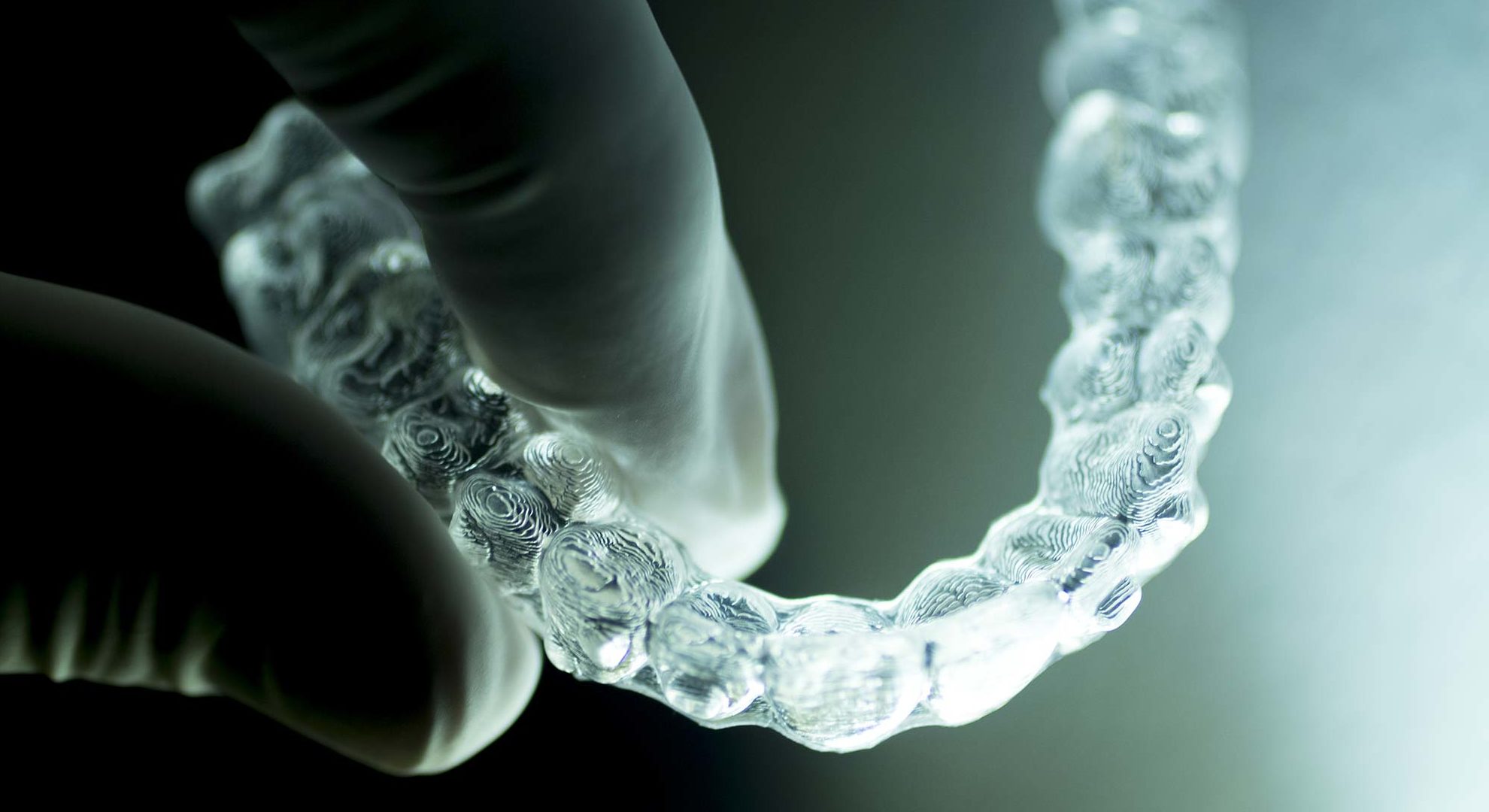 Anthony Gedge predicts what the future of dentistry will look like in five years time. And questions why we can’t actually implement this now.
Anthony Gedge predicts what the future of dentistry will look like in five years time. And questions why we can’t actually implement this now.
It’s the year 2025.
A new, stronger, more deadly version of SARS-CoV-5 is causing havoc. The world has been in pandemic, panic and pause mode for four years.
The new COVID virus continues to spread at a slow burn; intermittent lockdowns are as normal as eager patients lusting after immediate, satisfying, life-transforming dentistry treatment before perio.
A newly-approved vaccine offers seven months of protection. But international deal-making slows its distribution.
An estimated 1 billion people have been infected worldwide, and hundreds of thousands have died.
Amidst this chaos, your prospective 18 to 35-year-old female orthodontic patient, ‘Jane,’ asks Siri for a straight-teeth dentist with more than 100 five-star reviews and three patient video testimonials within a 20-mile radius.
Jane eats up the persuasive information that pops up on her phone. From each piece of marketing she views, she’s offered a complimentary virtual smile visit. This is the CTA (call to action) that draws her in.
Virtual visits
This victim of twisted, buckled and crooked teeth is now inside your Virtual Smile Visit System (VSVS). With an option to book a ‘virtual visit: fix your smile from the comfort of your own home’.
Then Jane is asked what is frustrating about her crooked teeth, her fears about carrying on with twisted teeth, and what she would like to happen to her unattractive smile.
Jane pays a small refundable deposit (to reduce cancellations). She is then instantly connected to a virtual smile adviser (VSA) 150 miles away from your practice.
The VSA receives a text to open up her VSVS. Your VSA has a pull-up green screen in her spare room, a high-quality microphone, and an easy-to-set-up, high-definition video camera linked to her Macbook.
Your prospect then enters your virtual waiting room and watches an orthodontic patient video testimonial. Followed by an introduction from your VSA about what to expect during the 45-minute virtual visit.
Your VSA uses an easy-to-use live video software presentation package as if she were in a live TV studio. She can use the same software to do Facebook Lives. Answering your followers’ questions and concerns. And she can even have a guest on who might perform live Botox demos, share hairdressing tips, and so forth.
The next digital steps
The straight-teeth seeker is asked to pose for five photos. Then digitally agrees to an onscreen consent form that’s recorded and geotagged if you ever need it.
Her photos are uploaded into an AI smile assessment software (Smilemate).
She is then shown a report of her teeth alignment and gingivitis. A few treatment options are offered, along with notice that these are just options and not an in-person doctor’s diagnosis.
Jane is so blown away by her virtual visit, and so eager to move forward, that she now pays on-screen. She books into the practice for a full case assessment.
If a dentist is available (the software tells who is available at the moment), the dentist can join the virtual visit to build fast, instant trust then and there.
If Jane has time, the dentist can then complete part of the full case assessment virtually. Thus saving time in the practice.
Finally, Jane is transferred to your virtual front desk (300 miles away from your practice), still within the same platform.
Her medical history is taken, and she’s scheduled for the next available appointment.
One week later…
Jane arrives at your smaller-than-normal analogue dental clinic, which happens to also now be five times more profitable, efficient, and convenient for patients.
The old hub and spoke method is out of favour. Cloud and spoke dentistry is the norm. The spoke now becomes the hub, and the hub in the middle of the spoke surgeries is your Itero, CEREC, radiology, decontamination, all shared.
Make no mistake, corporates will now halve the size of reception teams. They will turn that dead reception space into another spoke surgery.
Virtual receptionists, treatment coordinators and practice managers will work from home. Calls are round robin. Virtual huddles are the norm.
In the virtual spoke clinic, there is no waiting room for patients. No reception, no phones, no chaos, no taking payment, no booking people in, and no medical history clipboard and pen.
A Google maps link sends Jane to a reserved car-parking space with a car-battery charger. She then lets herself directly into your bespoke surgery, after receiving an automatic text, by showing her face to the camera.
You will sit in a corner shoulder-to-shoulder as you complete the remaining clinical assessment. She starts immediately with an Itero scan.

Commencing treatment
Once treatment commences, Jane watches a welcome video inside the app that covers expectations between her and the practice. A patient promise charter, if you like.
Moving forward, Jane happily scans her buckled smile every week for unseats through the dentistry-disrupting Dental Monitoring process.
If an unseat occurs, she receives an app notification to use chewies. A week later, Jane scans her smile and receives notification to move forward to aligner two. And so goes the rest of the virtual care.
Jane can’t wait to tell her family and friends.
Jane is delighted, not disturbed, at receiving ‘hands-off dentistry’. She’s pleased that she does not have to fight through traffic, take time off work, and then suffer sitting in a high-fear, low-trust, busy and perceived-unsafe environment in order to have straighter, whiter, healthier teeth, and a life-transforming smile.
Jane refers a friend after receiving an amazing experience before, during and after with this ‘smartphone-dentistry’ practice.
Jane was particularly motivated to refer friends after receiving a specially-written patient message. She is also automatically and periodically asked to leave an online review about her amazing hands-off dentistry experience.
Then, a few weeks after her review, Jane is automatically asked for a video testimonial. This smartphone dental practice has just doubled its OLPV – orthodontic lifetime patient value. And the practice added more persuasive marketing assets to growing its online reputation.
Sound good? Sure.
But why wait five years to implement this vision, when smartphone dentistry technology is available right now?
Smartphone dentistry
One of dentistry’s biggest disruptors, Phlippe Salah, CEO of Dental Monitoring, half-Tunisian and half-German, told me recently they had scanned their billionth image after six years.
As part of my Disrupters of Dentistry series, I interviewed Philippe from his Paris HQ. From where he now employs over 250 people globally. That’s a staggering 300,000 scans a week. And all completed by user-generated smile selfies.
His view is that clinicians should engage in clinical treatment. Everything else should be done away from the clinic.
If this ‘everything else’ can be done virtually in a caring and effective and efficient manner, then so much the better for patients, clinicians and practice owners.
During lockdown, patients and practices were forced into smartphone dentistry. This will happen again for the second lockdown and in the years to come.
Some use it for emergency video-visit triage; others offered virtual consultations to make sure they could fill their books, hit the ground running, stave off the bank manager and still be there for their local community.
There are hundreds of smart dental practices moving into the virtual-visit future.
Virtual consultations
There are four types of virtual visit consults going on right now:
- Pre-recorded video consultation – patient uploads photos via a website. They then receive a video back from the clinician with recommendations of treatment options, time and cost
- Live virtual smile visit (LVSV) – patient sends or uploads photos, meets virtually with a treatment coordinator or clinician to discuss options, and then pays for a full case assessment moving forward
- Video consult summary – patient has an in-practice, face-to-face consult with a smile adviser (TCO) or clinician. Then receives a video summary recorded on Google Loom
- Virtual check combined with live virtual visit – patient uploads four selfies to Smilemate. Then books herself in for a virtual visit. A smile adviser runs through treatment options and then the client pays for full case assessment moving forward.
To give an idea of the results, I’ve seen LVSV deliver from 50% to 80% conversions. One VSA (virtual smile adviser) under my mentorship amassed more than 100 virtual smile visits. With an 80% conversion rate.
In fact, they are so busy, the owner is employing another virtual smile adviser some 150 miles away.
The shift to consumer virtual video confidence is now opening up your reach to a wider talent pool.
Virtual visits know no geographical boundaries. Virtual visits know no complicated video conferencing software. And virtual visits know no slow internet speeds.
The only boundaries to what is now possible are inside your own heads. Your patients are ‘virtually’ ready for smartphone dentistry.

Can AI dentistry replace the human touch?
Will AI dental software one day simulate reality enough to trick our senses into really believing we are someplace we are not? Who knows.
But, really, who would want to trick patients into thinking they are in your dental practice?
They would rather be at home watching Netflix than in your chair. Let’s get real. I have seen clinicians using a picture of their surgery as a background in Zoom. Who wants that?
The most comfortable place is your living room – get a backdrop of that, why don’t you?
When you ask your implant prospect to visualise chewing a steak via a virtual chew-the-steak-challenge visit (through which a client told me yesterday he has now already converted six prospects.
Remember this quote from The Matrix: ‘I know this steak doesn’t exist. I know that when I put it in my mouth, the Matrix is telling my brain that it is juicy and delicious…but you know what? (takes a bite of steak) Ignorance is bliss.’
Making something unreal appear real via software is not the aim here. Rather, the aim is to provide real care – remotely.
Those forward-thinking dentists who grasp the virtual nettle will win in the treacherous air ahead.
I am gearing up my inner circle to start planning for another lockdown. Virtual visits, virtual emergency visits and virtual checks via Smilemate and Dental Monitoring are central to their game plan.
If they have an Itero scan of a patient, then all the better to efficiently book that patient in for same-day dentistry.
Can virtual visits replace the art of hands-on examination?
Of course not – not entirely.
But the real question is this: ‘Can virtual smile visits with prospective patients replace face-to-face, heart-to-heart persuasion?’
My answer is yes, but at first I was convinced no.
Yet I am now focusing on making full paid examinations partially virtual.
I believe the art of examination builds trust because of the amount of time we spend with the patient and explaining the 51-point examination process. Time increases the experience and therefore trust.
Creating the perfect virtual exam
I have recently been testing with clients to see how much of the paid full examination can be done virtually. Around 60% is the usual answer.
For the purposes of this article, I interviewed my friend and now-retired dentist Barry Polansky.
Barry is convinced that when we get back to some normality, everything will remain the same. We will carry on doing face-to-face, in-practice, full paid assessments.
That may be, but my testing indicates that we can offload a portion of that to virtual.
Creating the environment of a small room with flowers, shoulder-to-shoulder seating, tea, coffee, and tissues is crucial.
The more heavy lifting that happens even before the virtual interaction – eg informative emails, answering treatment-specific objections through video and written communications, and infographics – the more likely the prospect will move forward into a paid full case assessment.
As an aside, while at home during this current pandemic, most of us spent plenty of time on Zoom and other video conferencing apps (according to Forbes, 49-year-old billionaire and Zoom founder Eric Yuan’s net worth jumped 112% to $7.57 billion).
But we were not fully staring into our webcams, were we? We are far too self indulgent for that. We were looking at ourselves.

Move over for the cosmetic dentistry boom
And so, I predict that we are entering into one of the biggest cosmetic dentistry phases thus far.
We as a society are now more aware of our smiles than ever before. Video conferencing has been our mirror and best friend. The new tools available to us are allowing us to transcend the barrier of needing to always see our patients in person.
There is an excellent and beneficial opportunity. Not only to incorporate smartphone dentistry into routine dental care but also to use it in attracting and converting new patients.
If we use it in an appropriate, evidence-informed manner, smartphone dentistry has the potential to help dental professionals manage their patients’ health and aesthetic problems, while addressing access-to-care issues.
’Dental professionals must recognise the limits of teledentistry (eg the lack of ability to directly examine a patient) and must explain to the patients the potential challenges and benefits of teledentistry and its limits for clinical diagnosis/management. Dentists must vocalise reasonable expectations on diagnostic abilities. Communication must be clear and expectations realistic. This is both for the patient and the dental professional. Lack of facial, vocal, or physical cues can lead to misunderstandings and misdirection’ (Talla et al, 2020).
‘Why didn’t we do a virtual?’
Dentists are image makers, readying us to face the ever-present mirror that is the smartphone.
The flawless selfie is what social media expects from the younger generation, replete with perfect smile.
I asked Dental Monitoring’s Philppe Salah if anytime soon a patient will scan her own teeth with a disposable scanner app.
He said no, due to price. But medical history, payments, consults, AI assessments, prescriptions, new patient intake, consent – everything apart from X-ray, probing and AGP – can and clinicians should do away from the practice.
Case in point: I recently spent an hour battling through Malaga traffic for a urology appointment.
I then waited another 40 minutes for the doctor to finish with another poor soul before seeing me.
I walked in, showed him, and he said, ‘why didn’t we do a virtual?’ Yes, that would be awkward, but worth it in the end.
Everything feels strange at the beginning. But now millions of people, including my 80-year-old stepdad, are all more comfortable than ever to video chat from their smartphones.
The battle is not in the mind of your patients. Maybe the only uncomfortable part about moving into the new reality with virtual smile visits is you.
References
Talla PK, Levin L, Glogauer M, Cable C and Allison P (2020) Delivering dental care as we emerge from the initial phase of the COVID-19 pandemic: teledentistry and face-to-face consultations in a new clinical world. Quintessence Int 51(8): 672-7
Follow Dentistry.co.uk on Instagram to keep up with all the latest dental news and trends.


